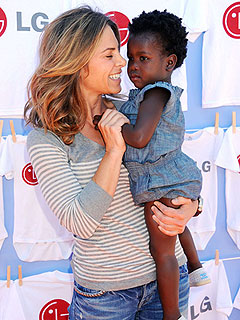Despite a fresh round of objections from neighborhood groups, airport commissioners Tuesday endorsed a controversial plan to push Los Angeles International Airport's northern runway closer to nearby homes for safety and efficiency reasons.
The action is part of a larger modernization effort designed to keep one of the nation's busiest aviation centers — and an economic engine for the region — competitive in an era of larger jetliners and airport upgrades in major cities, such as San Francisco.
"This is a reasonable and fair compromise," said Michael Lawson, president of the Los Angeles Board of Airport Commissioners, who cited a need to improve runway safety. "I don't want to be on a commission that made the wrong decision."
Airport commissioners voted 6 to 1 to approve the final environmental impact statement and conceptual plans for the latest round of proposed improvements to the nation's third busiest airport, including the runway separation project.
Commissioner Valeria Velasco, who lives in Playa del Rey a few houses away from LAX, voted against the plan because of the runway proposal, noting that she otherwise supports the airport's modernization.
On the list of proposals are terminal additions, upgrades to existing passenger facilities and a transportation center, as well as new parking areas and a consolidated car rental facility in nearby Manchester Square. Also planned are links to a light rail station at Aviation and Century boulevards and a people mover around the terminal area.
Individual board approvals are still needed for all the projects, the total cost of which is estimated at $4.76 billion. Though officials want to finish construction by 2025, it is unclear if or when all the proposals would be built.
The most controversial project is the 260-foot separation of the two northern runways to make room for a taxiway between them. Commissioners selected it as the preferred alternative out of nine options that have been under evaluation.
Proponents say the runway plan would increase safety and make it easier for the airport to manage the largest commercial jets, such as the giant Airbus A380, which now requires special handling when it arrives at LAX. They say that six earlier safety studies backed the plan, and that runway separations have generally been supported by pilots and the Federal Aviation Administration.
Because the proposal is confined to LAX property, airport officials say that no homes or businesses will be condemned and that measures will be taken to reduce environmental effects.
"I am very glad that we have gotten through a major milestone, but we have many milestones to go," said Gina Marie Lindsey, the executive director of Los Angeles World Airports, the operator of LAX.
Velasco and opponents in communities surrounding the airport contend that the project will increase noise, air pollution and traffic congestion in adjacent neighborhoods, further degrading their quality of life.
They assert that less harmful options are available and that the project would not substantially improve airport operations. Critics cite the latest safety study from NASA-Ames, which concluded that the northern runway complex is already extremely safe and that little would be gained from the $750-million separation.
The opponents also note that aviation industry demand for the wide-winged A380 is shrinking. And they say the airport's own environmental analysis concluded that the proposal would not improve efficiency as much as an alternative to upgrade just the northern taxiways.
Denny Schneider, director of the Alliance for a Regional Solution to Airport Congestion, said his organization would consider challenging the board's decision in court.
"I'm disappointed that misinformation trumps the facts," Schneider said. "I guess we will have to continue the fight to gain sanity in what we spend in this city and to protect the region from the problems that could arise when they try to implement this unworkable plan."
dan.weikel@latimes.com










